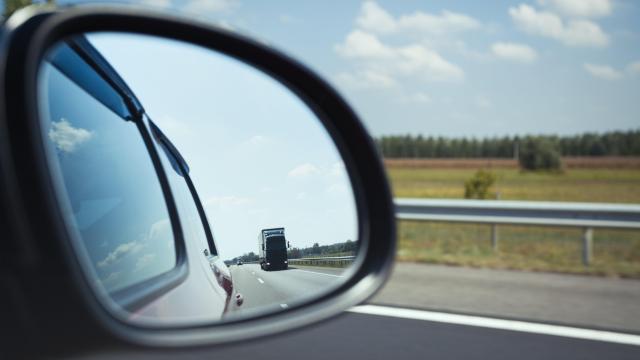Think back to your days in driver’s ed. Aside from being told to hold the steering wheel at “10 and 2″ (something now considered outdated and potentially dangerous), you were probably also constantly reminded to adjust your mirrors and check your blind spot.
And while some people have continued to do so out of habit, it’s one of those things that’s easy to let slide — especially if you’re the only person driving a vehicle. Plus, with all the new technology that lets you know when another car is in your blind spot, it’s tempting to rely on it completely.
But for a variety of reasons, that’s not the best (or safest) option. Here are a few of the ways to keep an eye on your car’s blind spots.
Where are your blind spots while driving?
According to the National Highway Traffic Safety Administration (NHTSA), nearly half of the area around a vehicle is hidden by blind spots. While you should always be mindful of the fact that you’re unable to see a large portion of the area around your vehicle, the NHTSA says that it’s especially important when you come across line-of-sight blind spots while driving. These are areas where roadside and vehicular obstructions can limit your reaction times — like on curved roadways, and when the crest or crater of a hill is near the roadway entrance.
How to watch your blind spots while driving
Most (if not all) of these probably came up when you first learned how to drive, but here’s a quick refresher (without having to weave in and out of cones in a giant car in your school’s parking lot):
Adjust your mirrors
If you’re not already doing this out of habit, get back in the habit now. Check your rearview and side mirrors every time you get into your car, and adjust them if necessary. If you’re driving a rental car or really, any vehicle after another person, take extra care adjusting all your mirrors.
Clean your mirrors
The next time you fill up your gas tank, take a few minutes to wipe your side mirrors and rear camera (if you have one) — ideally with a microfiber cloth. That way residue, water spots, or other marks won’t obstruct your view.
Look over your shoulder
Just like the new blind-spot-alerting technology in newer vehicles, we can’t rely solely on our mirrors, either. That’s why it’s important to look over your shoulder out of the back windows of the car to check your blind spots before changing lanes, for example.
Stretch at home
But we’re not getting any younger, and if we’re being honest, sometimes that over-the-shoulder glance doesn’t feel great. So to help with that, Lynn Fuchs, founder and president of A Woman’s Way Driving School, based in New York, suggests stretching those muscles at home.
“You can do exercises while sitting in a chair to stretch those muscles to be able to turn and look behind you,” she told the AARP in a recent interview. “You can help loosen those muscles up so you can get that view when you need it. In the car, that last-second check should always be over your shoulder.”

Leave a Reply
You must be logged in to post a comment.